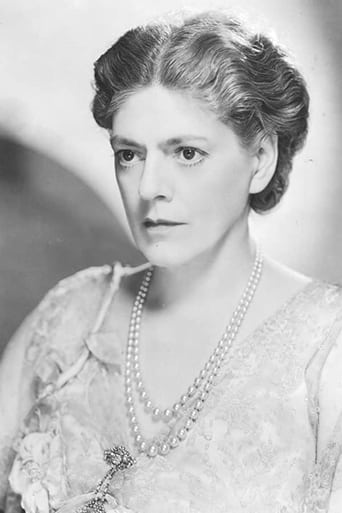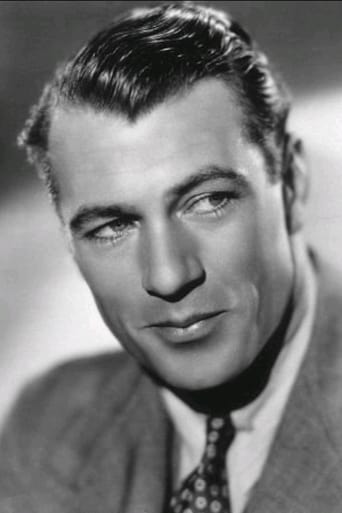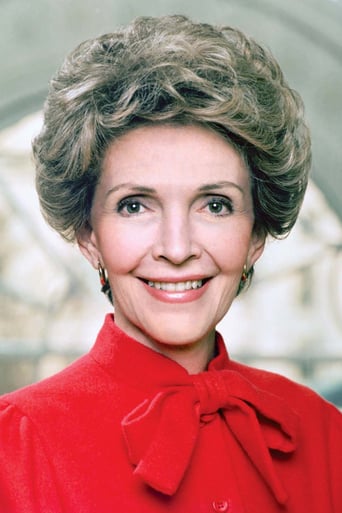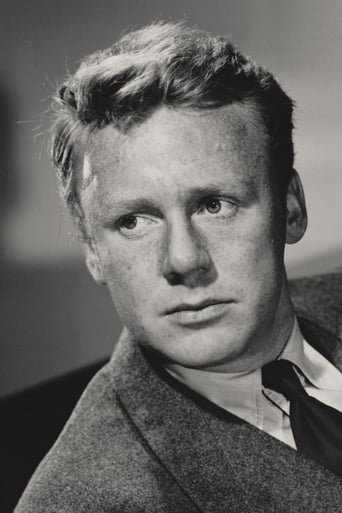MoPoshy
Absolutely brilliant
Invaderbank
The film creates a perfect balance between action and depth of basic needs, in the midst of an infertile atmosphere.
Brennan Camacho
Mostly, the movie is committed to the value of a good time.
marcslope
Expensive and all-star and in production for most of 1950 and 51, this MGM anthology reflects what patriotism looked like in the Cold War era, and uncertainly jumbled together comic and dramatic episodes. A couple just pass muster: There's one where Ethel Barrymore is a sad Boston matron dismayed to learn she hasn't been counted in the census, and in another, Marjorie Main is excellent as a grieving mother visited by her dead son's war buddy. Most of the stories just aren't interesting, and there's some amazing miscasting: Gene Kelly as a Greek entrepreneur making goo-goo eyes at Janet Leigh (and S.Z. Sakall rattling his cheeks as her father), Fredric March (in a rare bad performance) as a stupid Italian immigrant arguing with schoolteacher Nancy Davis over whether his son should have eyeglasses, Gary Cooper over-drawling as a Texan mis-explaining the Lone Star State. There's a welcome but perfunctory documentary about great African Americans, and William Powell is elegant in the opening segment. There's also a lot of narration, and if I'm not mistaken, it's Louis Calhern. It was understandable that MGM wanted to celebrate America in the early '50s, but couldn't they have come up with some better plots?
Brian Camp
I'm not quite sure who IT'S A BIG COUNTRY was aimed at. And given the fact that it was a box office flop, I'm guessing that the general audience didn't think it was aimed at them. It purports to show the diversity of America by offering seven segments promoting different aspects of life in postwar America, but it still traffics in stereotypes and Hollywood conventions. For instance, there are two segments involving immigrant fathers with children assimilating in ways they don't like. One immigrant father from Hungary hates Greeks and is appalled when his cherished oldest daughter falls in love with one. The other immigrant father, from Italy, refuses to let his son wear glasses because they're not manly even though the boy's teacher insists he needs them to be able to read the blackboard. In each case the immigrant, in a film supposedly pro-diversity, behaves in a most backward fashion. At least the Hungarian is played by an actual Hungarian immigrant actor, S.Z. Sakall, so there is some authenticity there. However, the Italian immigrant is played by Fredric March, of English, German and Scottish heritage, and the performance seems highly exaggerated. Surely, they could have gotten an Italian actor or even J. Carrol Naish, who did that kind of role effectively plenty of times in his career. It's the final sequence in the film and left me with a distinctly uneasy feeling. In the Hungarian sequence, Janet Leigh plays the oldest daughter and Gene Kelly plays the Greek she falls in love with. I guess this is what is meant by "ethnically blind" casting.The first sequence goes so far as to dissect the notion that America is a "great country" when a traveling salesman (James Whitmore) on a train ride buttonholes a college professor (William Powell) to tell him that America is a great country and the professor then responds with "Which America?," and starts pointing out how different America is depending on where you are in its vast domain. So it looks like there will be some critique of blind patriotism, a direction then completely ignored in the rest of the film.The segment on African-Americans doesn't even mention the race of its participants in the narration (by Louis Calhern) accompanying it, preferring to use the phrase, "other Americans." Instead of a fictional story, it offers a documentary sequence on prominent blacks in the postwar era, including Nobel Prize winner Ralph Bunche, then the ambassador to the United Nations, General Benjamin O. Davis, and the late George Washington Carver. There are segments on sports and the arts that highlight Jackie Robinson and Lena Horne, among others. There are numerous less well-known blacks in government and business who are cited, so it's nice to see a slice of little-known history. Curiously, the military footage is all from World War II and shows a distinctly segregated military even though President Truman had desegregated the military three years before this film. I suspect that producer Dore Schary feared that any fictional story about blacks that they created for the film would get criticized for stereotypes, denounced for avoiding the topic of discrimination, or, if they chose to be bold enough to tell a proper story about blacks in the postwar era, boycotted by southern theater owners. The documentary sequence was clearly a compromise and it could easily be removed by theater owners in the south. There are no non-white characters in any other sequence of the film.There's a comic monologue by Gary Cooper as a Texan who speaks modestly of the state's size and reputation, wondering, in tongue-in-cheek fashion, why everyone thinks Texas is so "big." It doesn't jibe with the rest of the sequences here and was clearly inserted for comic relief.The best sequence is arguably the one in which an Irish immigrant widow, played by Ethel Barrymore, insists to a Boston newspaper editor (George Murphy) that the 1950 census did not include her, so, after a false start, the editor starts a campaign to get the Census Bureau to correct its mistake. It's about wanting to be acknowledged and recognized by the larger society, something each wave of immigrants has had to deal with in different ways over the last couple of centuries.Another sequence focuses on a visiting minister (Van Johnson) who takes the pulpit at a church in Washington D.C. in 1944 at a time when the then-president, Franklin D. Roosevelt, attends that church. The minister tailors his carefully prepared sermon to the president every week, despite the president's absence, putting the regular parishioners to sleep until the church sexton (Lewis Stone) finally calls him on it, urging him to address the entire congregation. I'm not sure what this segment had to do with the aims of the film or what it was trying to tell us, but, interestingly, the sequence cuts from the entrance of the president (off-camera) at the very end to the next sequence where we see a school teacher at work, played by Nancy Davis, who would marry Ronald Reagan the following year and become the First Lady 30 years after this film, adding a surprisingly prophetic touch.Curiously, the cast includes a mix of liberals and conservatives from Hollywood's ranks. George Murphy, Gary Cooper and Nancy Davis were notable conservatives, while Gene Kelly and Fredric March were outspoken liberals. I wonder what they all thought of the finished film.
utgard14
Well-intentioned anthology film from MGM that lacks a clear focus. It's a collection of short stories that don't seem to have any other point except, I suppose, that the United States is a melting pot and how swell that is. Absolutely nothing wrong with that idea but I feel like more effort could have been put into (a) writing better stories and (b) having the stories connect better to drive home the "we're all different but we're all together" theme. The best anthology films tend to connect their stories and this just doesn't do that well. Still, it's full of old stars and the stories themselves, while not the strongest, are enjoyable enough. Worth a look for classic film fans. Probably kryptonite to cynics.
spirit11
WARNING: These comments may reveal portions of the film's plot.I had thought that the "episodic" film format was an invention of the 1980's art film. "It's a Big Country" killed that myth by presenting a film about the USA that is built on eight different episodes. The episodes are drawn together by a common narration, their focus on different ways of looking at the USA, and the introductory episode which lays out the concept for the film.In the opening segment, James Whitmore rides a commuter train and tells another rider, "I love this country?" The other rider's response catches Whitmore off guard. "Which country?" He then points out that the USA is many countries -- political, military, religious, industrious, urban, rural, and many others. Each of the following seven segments of the film then focus on various ways of looking at the USA.The actors in those seven segments are a "Who's Who" of 1950's film. The already mentioned Whitmore, Gene Kelly, Van Johnson, Gary Cooper, Janet Leigh and Keenan Wynn share the screen along with many others, including legends Ethel Barrymore and Fredric March. If you are a classic film lover, check out the list of credits and you'll find at least one favorite among the actors.The film overall only comes across as average however -- it seems rather "preachy" on the concept of acceptance, and the happy endings of the segments come across too sugary. Fortunately the great acting in some of the segments pull them to the top of the heap. Gary Cooper's deadpan delivery combined with his Texas drawl in the one true comedy segment work's well. And the final segment in which a young immigrant boy finds he must wear glasses at the risk of ridicule of his father as well as his friends at school is equally appealing.There is one glaring inconsistency in the film. The overall point seems to be that we must drop our racial stereotypes. To that end virtually every racial stereotype is presented and cut down. Each of the episodes of the film is presented as independent stories within the film -- little stories within the story. But when they presented the segment focusing on African American's, no story is given, only a narrated segment with stock shots of black America are presented. Not one known American actor of African descent is included. In this respect, Hollywood seems to have been unable to overcome it's own prejudice and exclusionary practices of that time.You might enjoy portions of this film, but most persons will either stop part way through or fall asleep during this average film.




